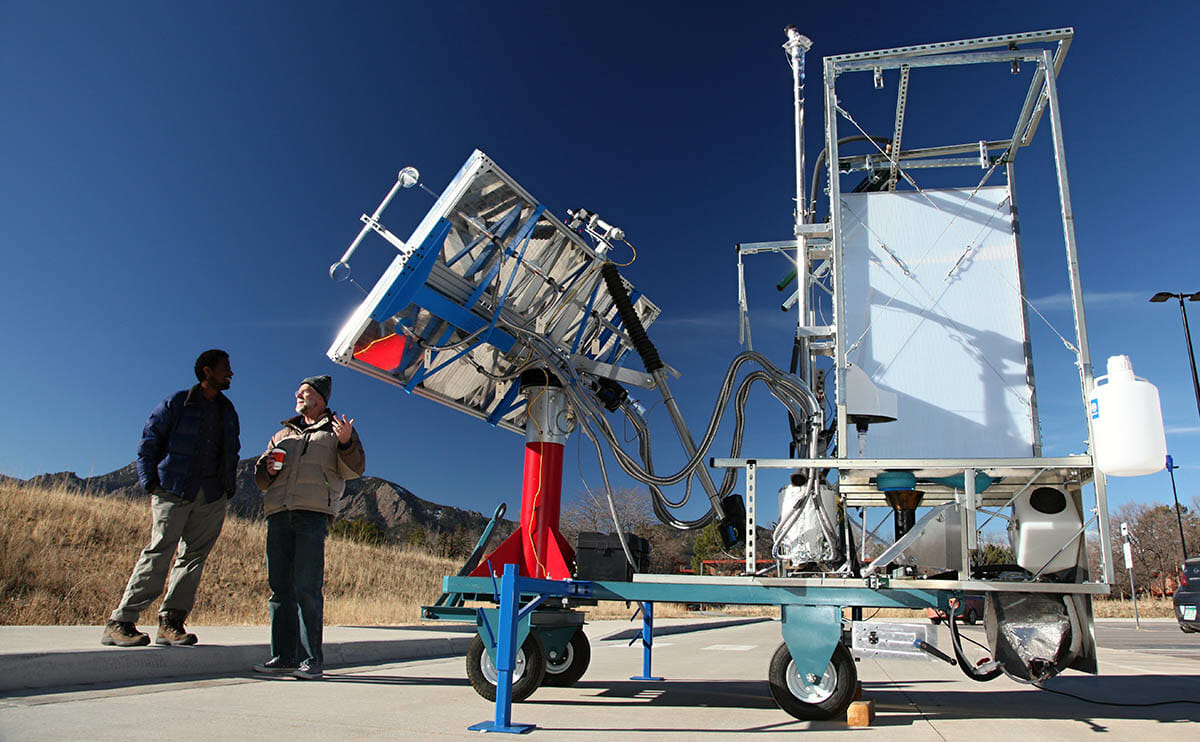Colorado-based SolChar is changing the way we look at poop.

The trick has the Bill & Melinda Gates Foundation applauding. They awarded the $770,000 grant to the team in 2012, followed up with another million last year and unveiled the SolChar at their Reinvent the Toilet Fair last month in New Delhi.
A working prototype from the team in Boulder, Colorado stood alongside a range of toilets the Foundation hopes could help 2.5 billion people worldwide. According to the World Bank, that’s the number of people without access to modern sanitation around the world.
The lack of proper sanitation for a third of the world’s population is no potty joke, costing the world $250 billion per year. Dollars and cents also can’t account for the 700,000 children each year who die as a result of food or water contaminated with fecal mater.
“A lot of people who don’t have access to toilets practice open defecation, they go out to the fields to use the bathroom, and that can have a lot of implications for the health, soil and food crops,” said Karl G. Linden, Professor of Environmental Engineering at CU-Boulder and principal investigator on the project.
Heated to 600 degrees Fahrenheit with little oxygen, the poop carbonizes into a charcoal like substance called biochar.
His team has pointed a set of eight parabolic mirrors skyward for a solution.
The mirrors focus sunlight onto quartz-glass rods connected to bundles of fiber-optic cables. Those lines feed the light into a reactor full of solid human waste. Heated to 600 degrees Fahrenheit with little oxygen, the poop carbonizes into a charcoal like substance called biochar.
Others have had the idea of using the sun to make biochar, but Linden’s team is the first to think of using fiber optics.
“Most applications that use concentrated solar have to bring the reacting media to the focal point of the solar collector,” explain Linden. Fiber-optic cables give his design team leeway in linking the reactor — where the fecal mater is heated — to the solar collector.
Linden says the end product looks nothing like feces. And those dangerous pathogens? They can’t quite stand the heat. His only worry when he holds the rocky, black biochar is the thin layer of harmless soot left on his fingers.
[mf_mosaic_container columns=”3″ captions=”yes”]
[mf_mosaic_item src=”https://modernfarmer.com/wp-content/uploads/2014/04/solchar1.jpg” number=”1″ caption=”An array of parabolic mirrors focus light to be channels through bundles of fiber optic cables. “]
[mf_mosaic_item src=”https://modernfarmer.com/wp-content/uploads/2014/04/solchar2.jpg” number=”2″ caption=”Biochar is its final form.”]
[mf_mosaic_item src=”https://modernfarmer.com/wp-content/uploads/2014/04/solchar3.jpg” number=”3″ caption=”The reactor of the SolChar. Directed light heats the chamber to over 600°F. All images courtesy of the University of Colorado at Boulder”]
[/mf_mosaic_container]
In fact, biochar can do a good bit of good. In a pinch, people in rural parts of India, for instance, could use it as a cooking fuel or even to filter pesticide contaminated water, says Linden.
For farmers, soil containing 10 percent biochar can hold 50 percent more water and provide a greater amount of nutrients to crops. Linden also suspects he might have something on hand to improve biochar’s capability as a fertilizer — urine.
The SolChar toilet separates liquid and solid human waste because urine, unlike feces, is of minimal danger to human health. It also makes for a pretty decent fertilizer. One idea his team hopes to explore is pouring the pee over biochar to retain the liquid’s helpful bits of phosphorus and ammonia.
‘We have these days of feces collection, we call it poop for a purpose.’
But the bigger challenge Linden’s team faces as their prototype works its way back from India to Colorado is reducing costs. Linden guesses that a commercial version of the SolChar would cost $11,000 to $12,000. To meet the Gates Foundation’s goal of the toilet costing no more than 5 cents per person per day to use, the team needs make the toilet both bigger and cheaper.
He hopes their next version will serve a shared household of 30 to 40 people and cost between $3,500 and $6,500.
To get there, his team will need to build on a collaborative success and make a few more requests for, um, experimental materials.
“We have these days of feces collection,” says Linden. “We call it ‘Poop for a Purpose.'”
He recommends that participating students, professors and other faculty members bring coffee.